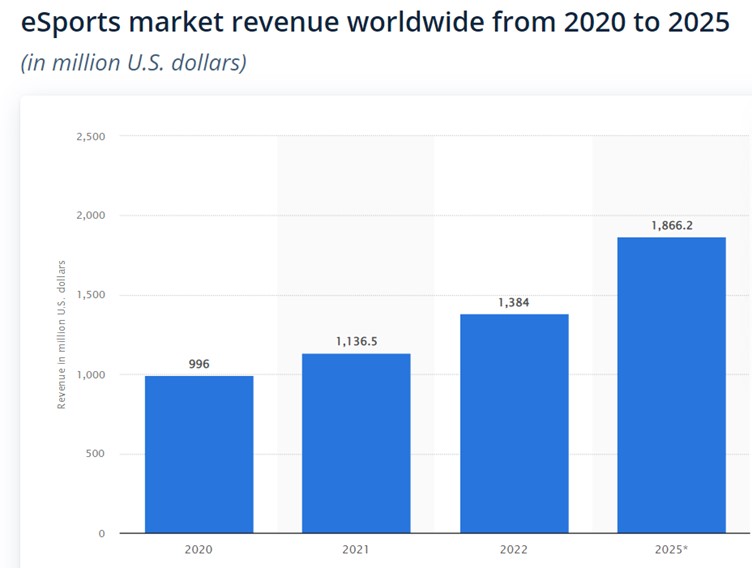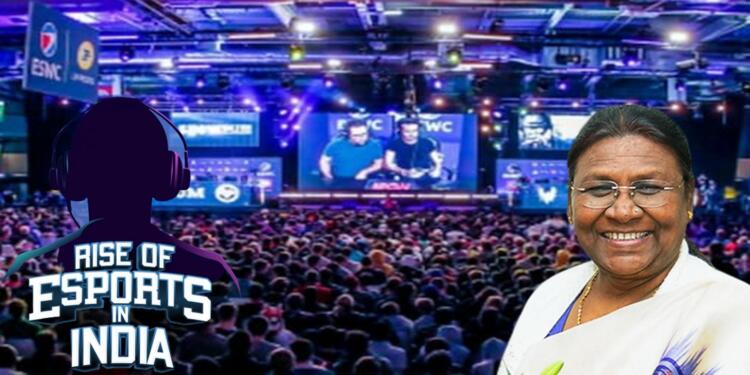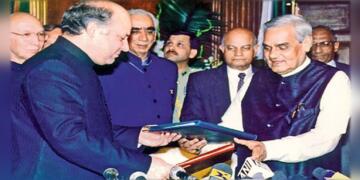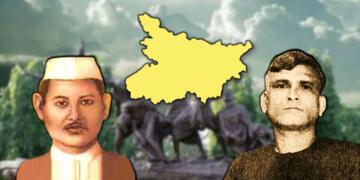Government gives official recognition to Esports: The relatively modern phrase called “Modern problems require modern solutions” is well into its formative years of adoption by policymakers all across the world. The latest breakthrough of governments adapting to esports will make the phrase immemorial. Though a bit late (thanks to excessive checks and balances), India has also arrived in the global competition.
Esports is now a sport
The Modi government has legitimised esports. Now, the players competing in esports will be called players, rather than gamers, which is an umbrella term. Esports as a discipline is now integrated with existing mainstream sports in the country. It will now be regulated by the guidelines set by the Ministry of Youth Affairs and Sports (MYAS).
The rules and regulations have been approved by Draupadi, Murmu, honourable president of India. She exercised her executive power under Article 77(3) to effectuate this much needed change. Additionally, Gaming has been put under the Ministry of Information and Technology (Meity). By doing this, the government has accepted the age-old demand of the esports community of demarcating the line between Gaming and esports.
Esports community has often urged that they are professionals and their bread and butter depend on the skills they develop by putting thousands of hours in the game. The problem was that Gamers also spent thousands of hours while playing. Government and most people had traditionally failed to understand that average gamers do not play the game with cut-throat competitive spirit. If they win, they win; but if they lose, losing is also okay for them. That is not the case with players who deploy their skills in esports.
Remarking on the significance of change, Lokesh Suji, the director of esports Federation of India and vice-president of Asian Esports Federation, said “We have been constantly working on establishing the difference between esports and iGaming, and finally, our efforts have been fulfilled. We welcome this announcement by our government, which will open new avenues to pour in more investment opportunities in this booming industry.”
Also Read: Here is the list Top 10 mobile games of 2022 for all age groups
History of development of Esports
It is indeed a wonderful opportunity for India to expand its wings in the new domain. Esports has caught momentum only during the last few years, but its rise has been meteoric, and took years to realise it. The game has its genesis in the cold war race between the US and the USSR. Both countries used to hold intra and inter-university competitions in their respective geographies to gain technical superiority. In the 1970s, video games had become a trend and children had just started to drop out of traditional playgrounds to check into machines. The Nixon government decided to use it for promoting space exploration as a domain for career.
It is widely acknowledged that the first ever competitive video game was called Spacewar organised by Stanford University in 1972. It was an “Intergalactic spacewar olympics”. Bruce Baumgart
won the five-man-free-for-all tournament and Tovar and Robert E. Maas won the team competition. A one-year subscription for Rolling Stone was the grand prize. Two years later, Japan, an American ally, hosted a nationwide video games competition. Experiments continued all across the western world. In late 70s, a glamour quotient was added as well, when Sabrina Osment and Lynn Reid, a duo of professional female arcade players called “Gremlin Girls” visited 19 American cities. They were so proficient that out of 1,300 challengers, only 7 could beat them.
Over the next decade, online competition came to the fore. Games like Netrek, fighting game street fighter II, Street Fighter, Marvel vs. Capcom, Fatal Fury and Art of Fighting provided much needed relief to continuously frustrated western youth. Within no time, tournaments increased in leaps and bounds and citizens from the United States, Canada, the United Kingdom, Australia, and Chile lined up to participate in them. Kry tournaments included Cyberathlete Professional League (CPL), QuakeCon, and the Professional Gamers League, Nintendo World Championships among others.
The Asian chapter and domino effect
These games reached Asia due to the Asian financial crisis. The South Korean population quickly adapted to them, presumably due to the unemployment crisis. In 2000, the Korean Ministry of Culture, Sports and Tourism, opened its arm called Korean e-Sports Association. From there it did not take long for esports competitions to find Television broadcasters. Along with South Koreans, Chinese, Russians, Germans, French, British, Americans, Canadians, were also hooked up to the screen. Competition was increasing day by day.
Despite the competitions, national tournaments, television and Internet broadcasting, sponsors, prize money, esports had to struggle to get its due recognition. Russia did recognise it way early in 2001, but the government faced several pushbacks. In 2003, China did not listen to naysayers about its addictive impact and put it in the sports category. China’s Ministry of Human Resources and Social Security tests people for skills regarding esports. Jinping has been spending money in the form of handouts and cash benefits to increase the number of esports players in the country. Other countries like the US, Germany, South Korea, and Sri Lanka are also doing their bit to encourage participants.
Federations are launching their own versions of Esports
The reason they are doing it is because the industry can give astronomical rates of returns. Though it started from countries individually according to the dignified place of sports, now multilateral sports tournaments are adapting to it. It is pertinent to note that smart play by esports organisers has played a key role in it. It all started with the 2007 Asian Indoor games when a special medal ceremony was held for esports players. It continued in successive tournaments including in Asian Indoor and Martial Arts Games. In 2018, esports got its biggest breakthrough when esports around games such as Hearthstone, Starcraft II, and League of Legends were presented as an exhibition event at the Asian Games. Looking at these developments, existing sports have also started their online variant of offline sports.
For instance, World Sailing organises a eSailing World Championship, National Football League organises the Madden esports tournament, Formula One organises the “F1 Esports Series,”National Basketball Association holds NBA 2K League. Major league Soccer, Major league basketball, National Hockey League are some of the other tournaments which have adapted to this change. Big names of industries such as David Beckham, co-owner of Guild Esports, Mark Cuban, investor in Unikrn, Steph Curry, Magic Johnson and Robert Kraft among others are some major names invested in the domain.
Global prospects
Based on these promises, the industry is finally catching momentum. According to Statista, a data churning website, 2021 was the first year in which worldwide annual revenue crossed $1 billion. It is expected to grow at a remarkable rate of 9.47 per cent (Compound Annual Growth Rate). It will grow on the account of users. While in 2019, only 400 million people were connected to it, the number is projected to jump to 720.8 million in 2027. Along with it, viewership is also increasing. Newzoo has estimated that viewers will increase at the CAGR of 7.7 per cent till 2024. The line between esports, live streaming, and even influencer marketing is quickly diminishing.

These people will bring in media rights, live event ticket sales, merchandise sales, and in-game purchases, sponsorships and advertising among others. This is getting reflected in price money as well. In 2021, Bucharest witnessed a team prize pool of $40 million, highest ever in the history of esports. The highest in individual sport till date is $15 million.
India can dominate the space
Somehow, India has not been able to capitalise on the growing industry. Despite being part of Asia-Pacific, which along with North America, and Europe comprise 57 per cent, our growth has been too slow. In 2021, we generated only Rs 7.5 billion worth of revenue. India does have a large pool of players and teams. We have more than 1,50,000 players and over 60,000 teams. 90 per cent of our esports players play the games on mobile phones. On the back of Internet access becoming easy for Tier-2 and Tier 3 cities, the number of players is expected to grow with a CAGR of 78 per cent to reach 1.5 million by 2025.
Companies are more than ready to jump on the opportunity. The viewership is slated to zoom up to 85 million and the viewing experience will be made easier and flawless by more than 1000 companies in India. Most of these operate in the gaming sector only and not specifically esports, but the trend will only reverse. Revenues through in-app purchases, licensing and merchandise, streaming ad, tournament sponsorship, syndication are slated to increase by more than 100 per cent in upcoming years. Challenge is getting bigger for established players like BGMI, Valorant, Call of Duty, Tekken 7, DOTA 2, Sports games, multiplayer online battle arenas (MOBAs), first-person shooter (FPS) games, fighting, card games, and real-time strategy (RTS).
The domain is promising. It is going to be driven by data, innovation and the Internet of things (IoT). Yes, it does have poor side-effects on health. Putting it in the category of games like Cricket, football, hockey among others is a good way to increase awareness and formulate a policy around it.
Support TFI:
Support us to strengthen the ‘Right’ ideology of cultural nationalism by purchasing the best quality garments from TFI-STORE.COM


































